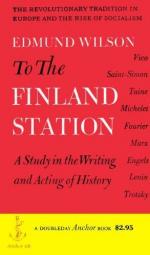
|
| Name: _________________________ | Period: ___________________ |
This test consists of 15 multiple choice questions and 5 short answer questions.
Multiple Choice Questions
1. What was Taine distancing himself from in his work?
(a) History.
(b) Religion.
(c) Romanticism.
(d) Catholicism.
2. What was Saint-Simon's theory of history?
(a) A cycle of development and destruction.
(b) Waves of equilibrium and breakdown.
(c) A punctuated equilibrium.
(d) A seething chaos run by the powerful.
3. What organization did Michelet want to create?
(a) A European army to keep workers in line.
(b) An armed peace league.
(c) A congress of industrial leaders.
(d) An international monetary fund.
4. Marx wrote his doctoral thesis on ___________.
(a) Michelet.
(b) Rousseau.
(c) Hegel.
(d) Saint-Simon.
5. Why was Michelet suspended from his teaching post?
(a) Treason.
(b) Obscenity.
(c) Radicalism.
(d) Impropriety.
6. According to the author, Michelet's writings demonstrate _____________.
(a) How class warfare is latent in every nation.
(b) How the master-slave dialectic is present in every culture.
(c) How different economies drive different parts of each nation's economy.
(d) How all classes belong to one economy.
7. When was Jules Michelet teaching?
(a) The 1820s.
(b) The 1880s.
(c) The 1920s.
(d) The 1850s.
8. Where did Michelet begin his work on the French Revolution?
(a) With the Rights of Man.
(b) With feudalism.
(c) With the American Revolution.
(d) With Locke and Rousseau.
9. What did Michelet describe about each social class?
(a) Its unique pressures and fears.
(b) Its interdependence with the other classes.
(c) Its unity with the other classes.
(d) Its lack of connection with the earth.
10. According to the author, what happened to the bourgeoisie after the French Revolution?
(a) They retained their power.
(b) They became entrepreneurs.
(c) They were reduced to workers.
(d) They became the capitalist owners.
11. What did La Scienza Nuova describe?
(a) A new model for gravity and the evolution of the universe.
(b) A new standard for evidence and experimentation.
(c) A new approach to scientific inquiry.
(d) A new approach to history.
12. How does Edmund Wilson describe Taine's approach to history?
(a) Biographical.
(b) Spiritual.
(c) Journalistic.
(d) Scientific.
13. What was Marx's passion while he was studying law?
(a) Contract law.
(b) International law.
(c) Poetry.
(d) Philosophy.
14. Where did Robert Owen work?
(a) In a mining town in Nottingham.
(b) In a textile mill in Manchester.
(c) In a factory in London.
(d) In a shipping company in Glasgow.
15. What did Taine study after 1871, when the Commune was established?
(a) Mysticism and spirituality.
(b) Philosophy and language.
(c) Politics and economics.
(d) Science and religion.
Short Answer Questions
1. What made Michelet unique?
2. What were Michelet's other books like after his History of France?
3. What name was ultimately given to the line of thought Michelet developed?
4. What was the French Enlightenment doctrine that inspired both Fourier and Owen?
5. What did Michelet focus on in his histories?
|
This section contains 498 words (approx. 2 pages at 300 words per page) |

|




